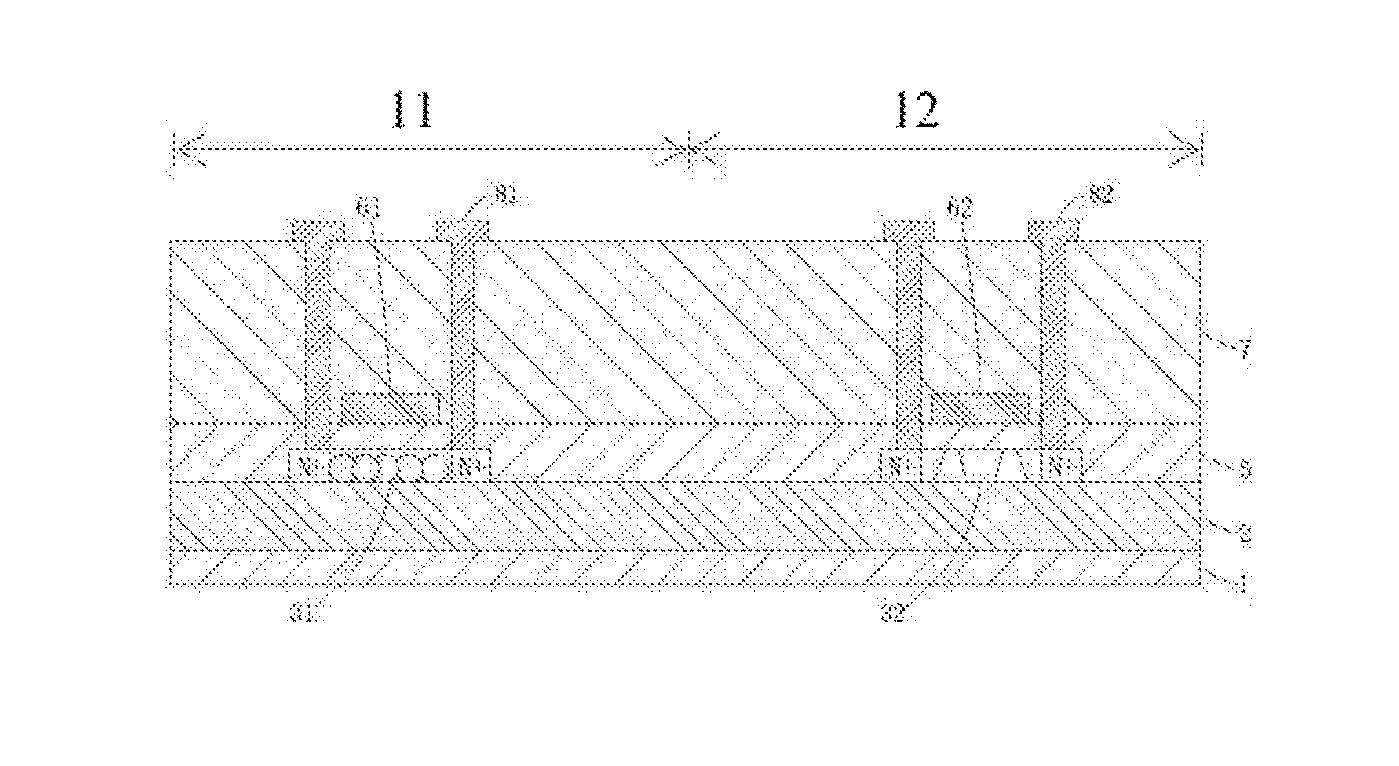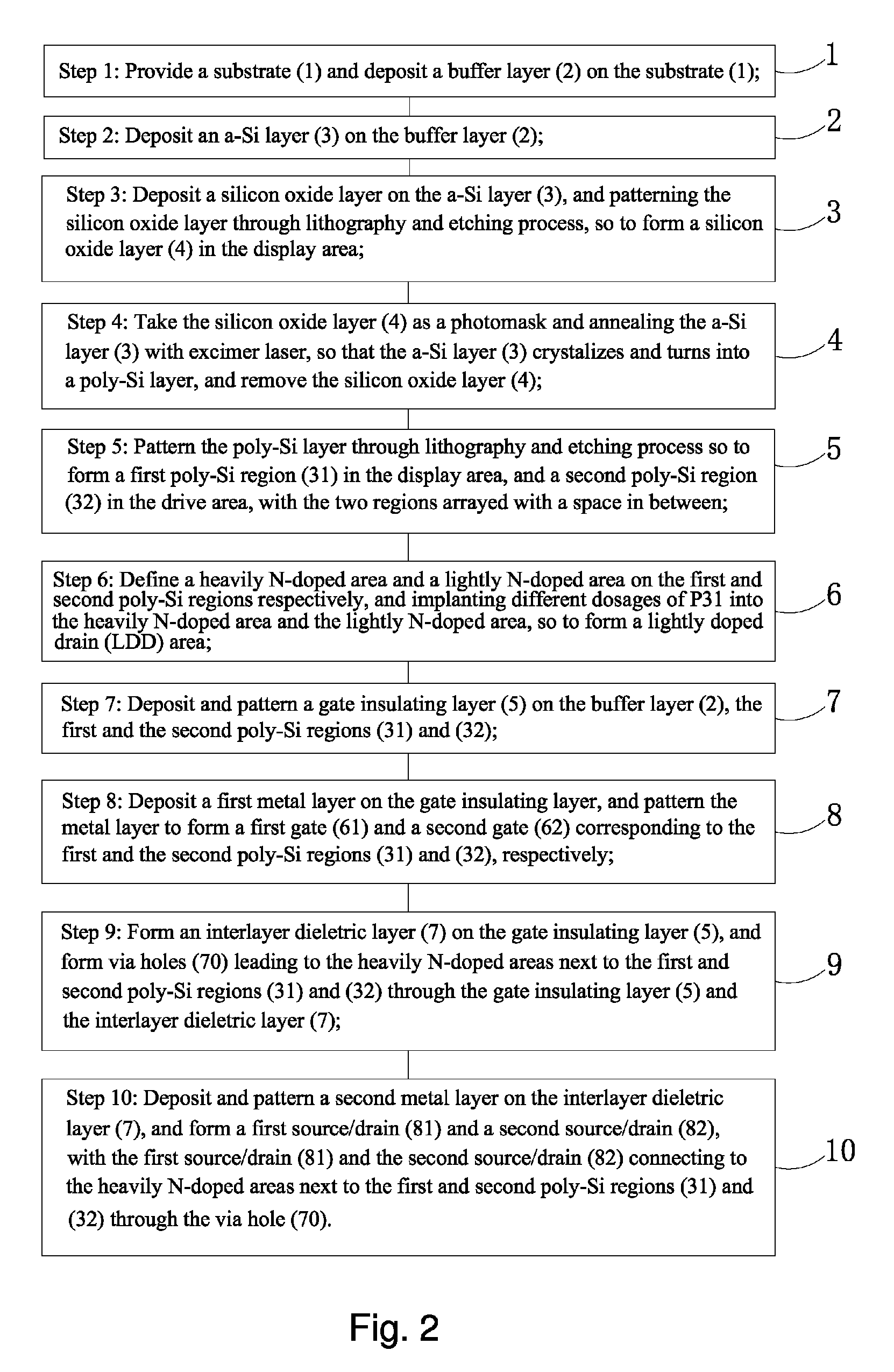LTPS TFT substrate structure and method of forming the same
a thin film transistor and substrate technology, applied in the field of display technology, can solve the problems of poor uniformity in the display area and affect the quality of ltps tft substrates, and achieve the effects of improving uniformity, reducing laser energy, and reducing the number of electrons
- Summary
- Abstract
- Description
- Claims
- Application Information
AI Technical Summary
Benefits of technology
Problems solved by technology
Method used
Image
Examples
Embodiment Construction
[0061]The drawings illustrate embodiments of the invention and, together with the description, serve to explain the principles of the invention.
[0062]Please refer to FIG. 2. The present invention provides a method of forming a LTPS TFT substrate comprising the following steps:
[0063]Step 1: Provide a substrate 1, and deposit a buffer layer 2 on the substrate 1, as shown in FIG. 3.
[0064]The substrate 1 is a transparent substrate which is made, preferably, of glass or plastic.
[0065]Specifically, the materials of the buffer layer 2 can be either silicon nitride (SiNx), silicon oxide (SiOx), or the combination of the two.
[0066]Step 2: Deposit an a-Si layer 3 on the buffer layer 2, as shown in FIG. 4.
[0067]Step 3: As shown in FIG. 5, deposit a silicon oxide layer on a-Si layer 3, and pattern the silicon oxide layer through lithography and etching process so to get a silicon oxide layer 4 in a display area 11. The a-Si layer 3 in a drive area 12 of the non-display area, at this stage, is n...
PUM
| Property | Measurement | Unit |
|---|---|---|
| brightness | aaaaa | aaaaa |
| electron mobility | aaaaa | aaaaa |
| flexibility | aaaaa | aaaaa |
Abstract
Description
Claims
Application Information
 Login to View More
Login to View More - R&D
- Intellectual Property
- Life Sciences
- Materials
- Tech Scout
- Unparalleled Data Quality
- Higher Quality Content
- 60% Fewer Hallucinations
Browse by: Latest US Patents, China's latest patents, Technical Efficacy Thesaurus, Application Domain, Technology Topic, Popular Technical Reports.
© 2025 PatSnap. All rights reserved.Legal|Privacy policy|Modern Slavery Act Transparency Statement|Sitemap|About US| Contact US: help@patsnap.com



